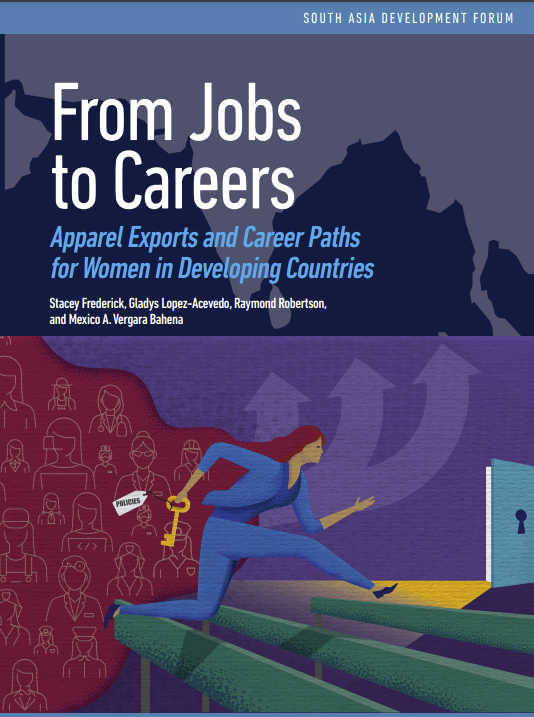From Jobs to Careers
Editorial: The World Bank Group
Licencia: Creative Commons (by)
Autor(es): Frederick, Stacey; [et al.]
It is well-established that bringing more women into the formal labor force is critical for economic development. One strategy often cited is further integrating developing countries into global trade, particularly global value chains (GVCs), to contribute to female labor market outcomes through the expansion of female-intensive industries. As a result, a big question frequently debated, is whether the apparel industry – which is the most female-intensive and globally engaged manufacturing industry – can be a key player in this regard. In recent decades, the apparel industry has shifted its production to low-wage developing countries, increasing the demand for women, closing male-female wage gaps, and bringing women into the formal labor force. Indeed, the benefits of apparel exports have reached the female population, but is an apparel-led export strategy sufficient to induce the transition from jobs to careers? This Report provides an answer by focusing on seven countries where the apparel industry plays an important role in its export basket – Bangladesh, Cambodia, Egypt, Pakistan, Sri Lanka, Turkey, and Vietnam. The Report’s key finding is that countries should take advantage of the apparel industry as a launching platform to overcome the fixed costs of introducing more women into the labor market. However, for this approach to work, there needs to be complementary policies that tackle the barriers that hinder women in their pursuit of long-term participation in the labor force and better-paid occupations. A hope is to shift the paradigm of how we think of women’s participation in the labor force by demonstrating the importance of the distinction between jobs and careers. Although aspirations towards careers are achieved in different ways, understanding how progress is being made in each country towards a more equitable life between men and women will pave the way for a better route forward.
[Washington: 2021]
Compartir:
Una vez que el usuario haya visto al menos un documento, este fragmento será visible.


